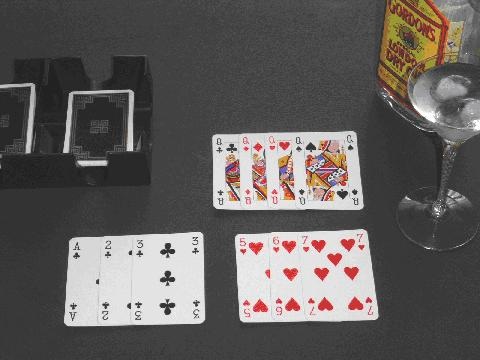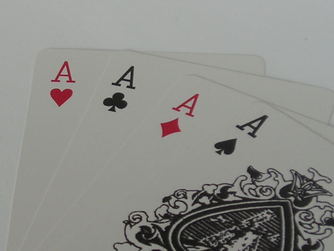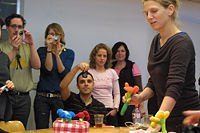So without further ado, I present ramblings on game design, and our card RPG in particular, through the lens of why dungeons work.
The objective is clear
Very few people overthink a dungeon crawl. It’s why games like Munchkin can exist. Bash the door, (ok, listen first if you are especially cautious,) kill the monsters, get the loot. Once in a while there is a trap.
Perhaps your game has more nuance than this, but regardless, players should always be able to answer the questions where are we, what are we doing, and why. In our RPG system this is encapsulated in the focusing question. Your party is either making a pivotal choice or addressing a challenge. Do you give the sword to the sage? How do you cross the chasm? What do you do to open the stuck door? In any case, the goal is clear, and the players simply focus on how to achieve it.
Pieces are modular
In RPG circles the term module is synonymous with prepared adventure. In dungeons the modularity is taken to an even more fine-grained level; the various rooms are independent. There is one common rule, rooms get harder the deeper in the dungeon you go, but within any one level locations are mostly interchangeable. Whether you meet the group of goblins playing poker first, or the green slime falls on you first is mostly inconsequential.
One of the primary goals of our card RPG is making a set of modular components. Pre-scripted adventures are able to take advantage of some shared locations, challenges, items, and creatures. (We’ve dubbed these remixables, to avoid the overloaded term module.) Sharing components reduces the number of cards needed, and GMs running a game on the fly have access to a full library of inspiration. They can flip over a random remixable and use as much or as little of the detail as they wish.
To facilitate remixing, the component parts have very few dependencies. Just as in the classic dungeon crawl, it doesn’t matter whether you cross the chasm before or after you extract the sword from its stone encasing.
Component parts are interesting
Opening a new door in a dungeon inherently focuses players’ attention. The creatures or traps within will have to be dealt with. There may be the occasional nondescript room where the party can hole up to rest, but in a good dungeon, nearly every single room is unique and interesting.
In the card RPG trivial actions and decisions are glossed over. If you are presented with a choice or challenge, it is an important one. Ideally it is also unique and intriguing. The majority of time during a session is spent by the players imagining approaches and finding solutions. For this time to be well spent, the remixables must be interesting. As we develop more content it will be vital to curate it well. If it’s not great, it’s not good enough.
Component parts tie into a theme
This goal seems at odds with the plug and play aspect of modules, and to some extent it is. While the pieces of a dungeon can be approached in an arbitrary order, in the best designs those pieces tie together into a coherent whole. Players in the Temple of Elemental Evil can clearly identify the theme of the dungeon.
In the card RPG this goal is accomplished by tying the components into an overall story and larger world. Playing the stock adventure means traveling through a series of challenges that all contribute to the plot. In ad hoc GM mode, the detailed descriptions can be used to set each remixable within the game world.
Players are rewarded for success
In a dungeon there is typically a tangible reward at the end of each encounter: the loot. Even the lowly kobold likely has a few copper tucked away in his belt pouch. The loot provides immediate gratification to the party; they have succeeded, here is their reward.
Our RPG has far less ‘stuff’ than the average dungeon crawl. Still, there is immediate feedback and minor rewards after every challenge. Every roll results in one of four levels of success, from critical failure through resounding success. If good plans are made and fate is on their side, the characters pass the challenge. High levels of success are rewarded with information, items, or shortened paths to the final confrontation. Failure incurs damage, increases complications, or ends the quest entirely.
One thing we may wish to keep in mind is just how viscerally appealing it is to win a new card. There is the act of simply revealing it, appreciating the artwork, reading what it does, then deciding who gets it. This is a strength of the format of our game that we should be taking full advantage of.
There are probably many more reasons why dungeons are staples of the genre, but this completes my list. Are there any important points that I missed? How can the enduring popularity of dungeons inform your game design?



 RSS Feed
RSS Feed